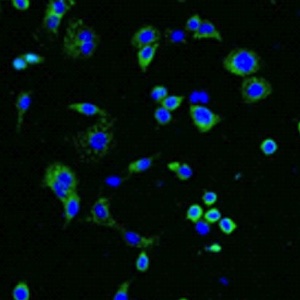Quercetin reverses 5-fluorouracil resistance in colon cancer cells by modulating the NRF2/HO-1 pathway
Quercetin (Que) has been proven to enhance the chemosensitivity of multiple cancers, including colon cancer (CC). However, whether the combination of Que and 5-fluorouracil (5-FU) has a synergistic effect on drug-resistant CC cells has not previously been reported. The effect of Que (5 and 10 μg/mL) on cell vitality and apoptosis of CC and CC drug-resistant cells was examined using a cell counting kit-8 (CCK-8) and flow cytometry. After cells were treated with 5-FU (10, 40 μg/mL), Que (10 μM, 40 μM), or 5-FU in combination with Que, cell proliferation, apoptosis, oxidative stress-related factors, reactive oxygen species (ROS), and nuclear factor erythroid 2-related factor (Nrf2)/heme oxygenase-1 (HO-1) pathway-related factors were examined by colony formation assay, flow cytometry, ELISA, ROS kit, immunofluorescence assay, and Western blot. The results showed that 5-FU reduced cell viability and induced apoptosis of CC as well as 5-FU-resistant CC cells. Que further restrained the proliferation, oxidative stress-related factors (SOD, CAT, GPx, and GR), ROS production, and induced apoptosis in CC cells and 5-FU-resistant CC cells induced by 5-FU. Moreover, the combination of Que and 5-FU attenuated the Nrf2/HO-1 pathway-related marker levels in CC cells and 5-FU-resistant CC cells. Therefore, our results suggest that Que reverses 5-FU resistance in CC cells via modulating the Nrf2/HO-1 pathway.
How to Cite

This work is licensed under a Creative Commons Attribution-NonCommercial 4.0 International License.
PAGEPress has chosen to apply the Creative Commons Attribution NonCommercial 4.0 International License (CC BY-NC 4.0) to all manuscripts to be published.









